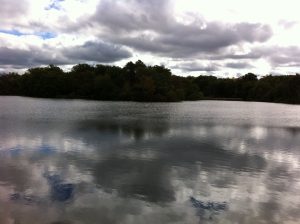Issues and Threats

Sewer Overflows of Raw Sewage
The watershed, or drainage area of Doan Brook is approximately 7,500 acres in size. Another 4,500 acres of sanitary sewers currently drain to the Doan Brook watershed, with periodic raw sewage discharges occurring during heavy rains or spring snow melts. This “combined sewer overflow” problem will be remedied in time through construction of large combination sanitary and stormwater sewers. Meanwhile, combined sewer overflows represent the largest source of bacteria and pathogens to Doan Brook. There are 14 combined sewer outfalls that dump into the Doan Brook, primarily in the City of Cleveland. View a map of combined sewer outfalls in Ohio and Cleveland from the Ohio EPA.
Non-point Source Pollution
Other sources of pollution to the brook from its heavily urbanized watershed area include metals, salt, oil and grease from roadways and parking lots; pesticides and fertilizers from lawn and landscaped areas; bacteria from pet and other animal waste; and sediment from non-vegetated areas. These non-point sources of pollution also lead to degraded water quality, which affects the brook’s population of fish and macro invertebrates (aquatic insects), not to mention other wildlife residents of the watershed.
Flooding
Hydrologic modifications, primarily the paving and introduction of impervious surfaces (rooftops, streets, sidewalks and parking lots cover about 36% of the watershed), affect rainfall and snowmelt runoff, leading to flooding in parts of the lower and upper watershed. In addition to carrying polluted runoff, the rush of water can scour streambeds and destroy aquatic habitats. Anything in the path of fast flowing water quickly becomes eroded — like stream banks, bridges and buildings.
Dams, Culverts and Channels
As the city grew around Doan Brook, the stream was confined in many places. In some locations, such as University Circle, it was forced underground into culverts. In other places, like Upper and Lower Shaker Lake, it was dammed to provide waterpower. In still other places, such as historic Rockefeller Park, it was channelized, or confined between rigid walls in rectangular channels. All these changes have degraded the ability of the stream to support aquatic life, as has increased flooding and deteriorating water quality.
